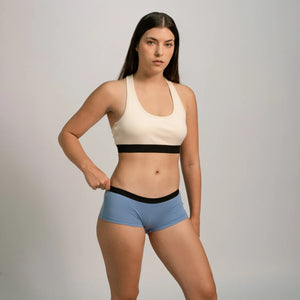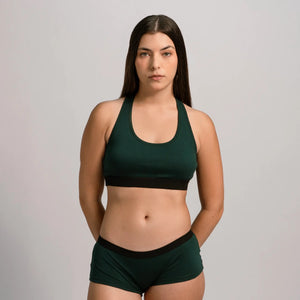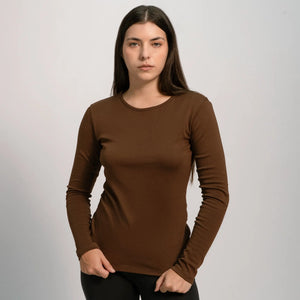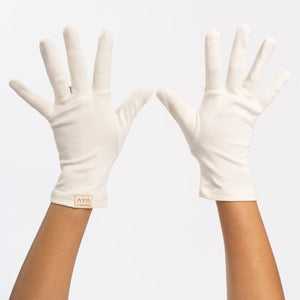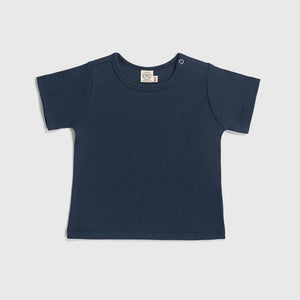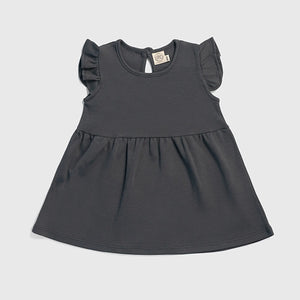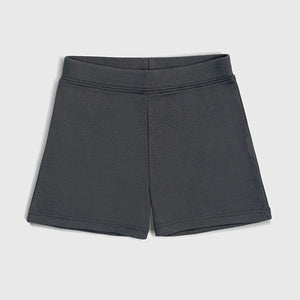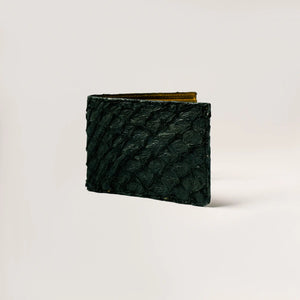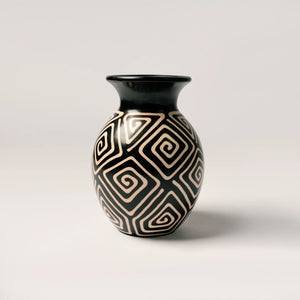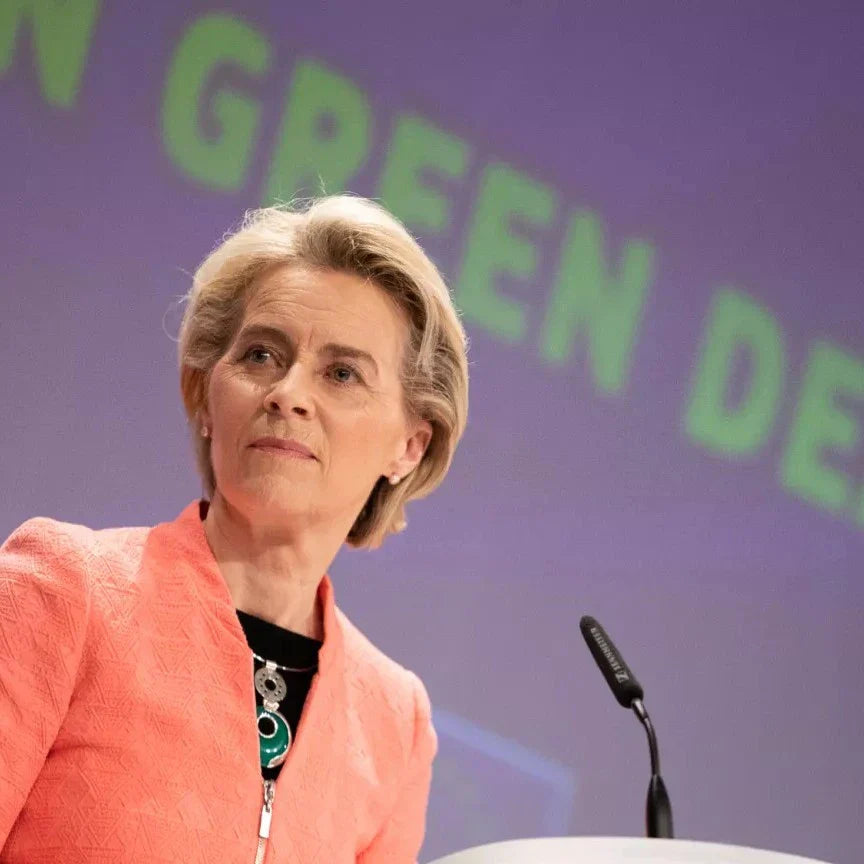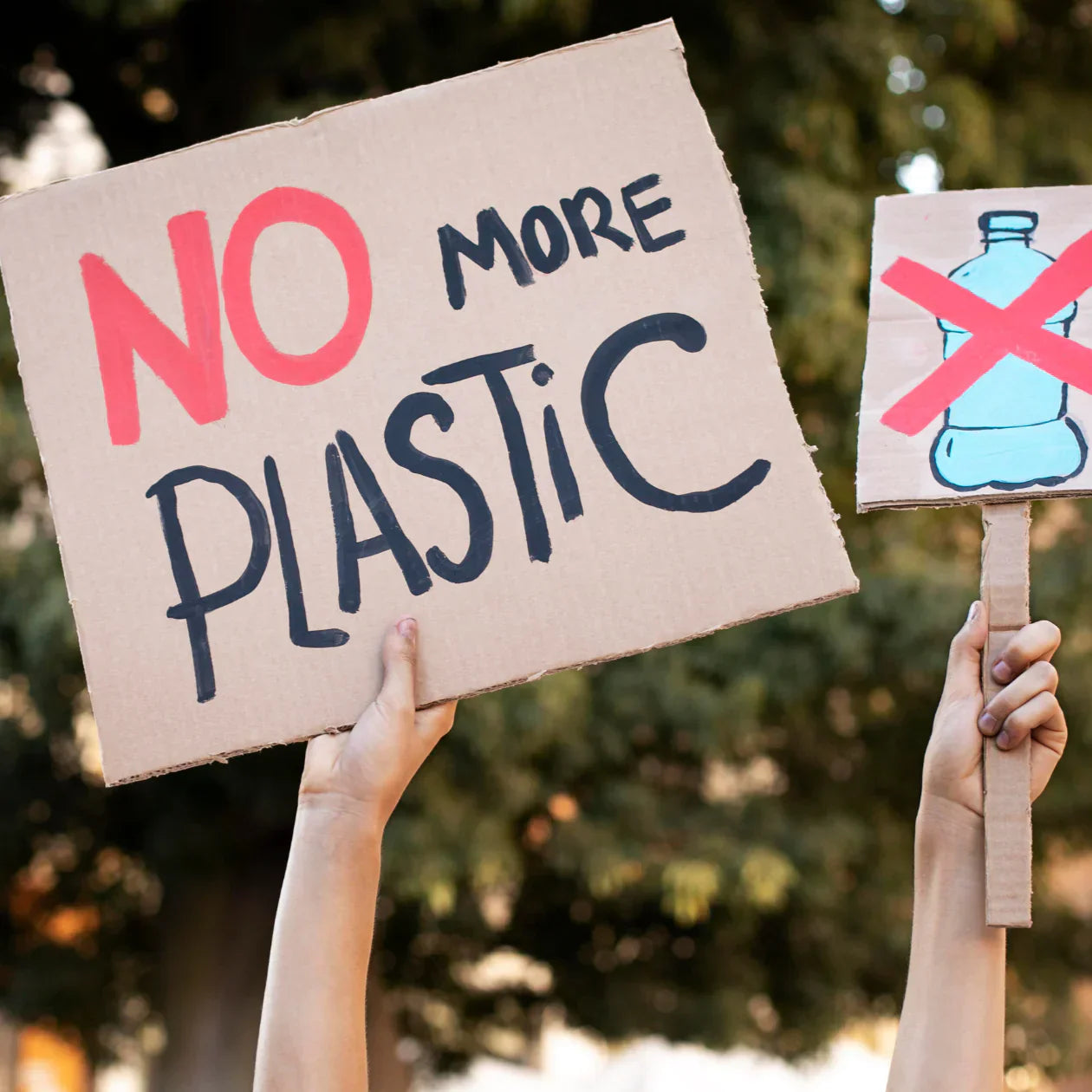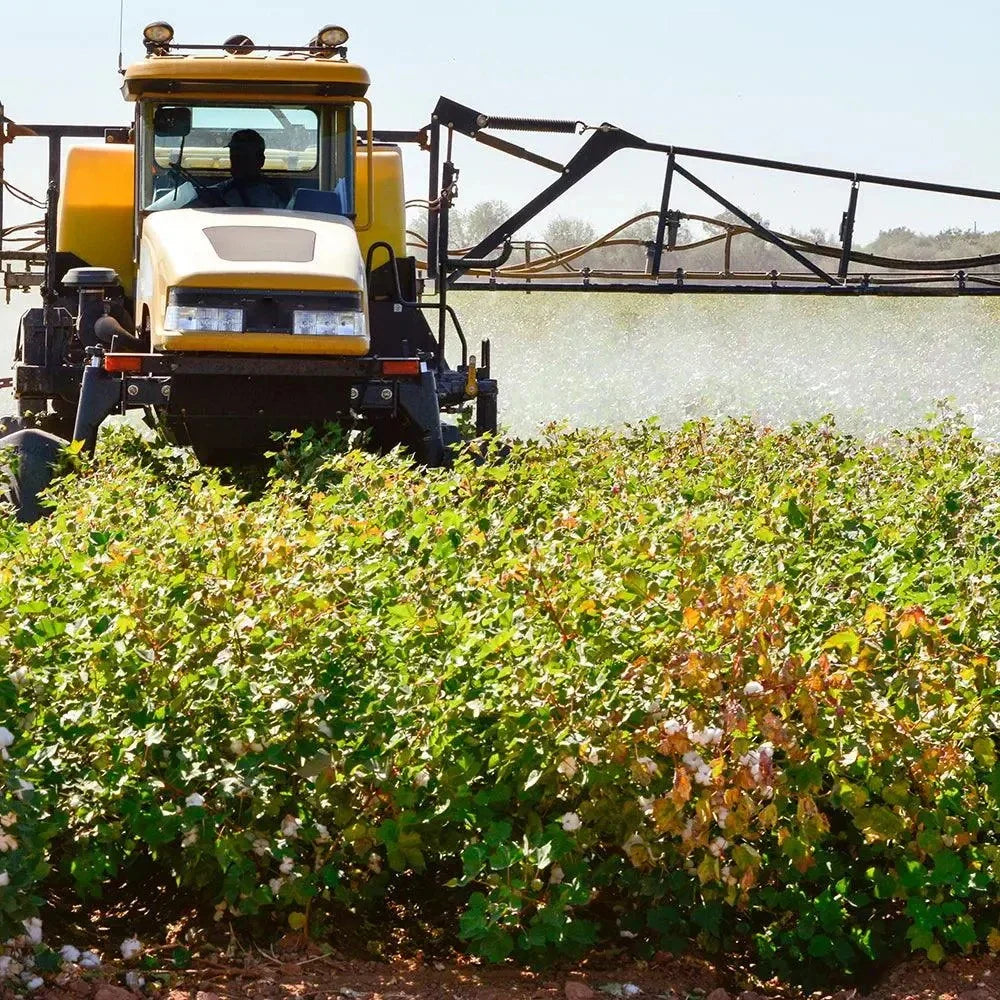The Truth About Recycled Polyester
In Fashion industry
.
AYA | AUGUST 28, 2025
READING TIME: 6 minutes
By Jordy Munarriz
AYA | AUGUST 28, 2025
READING TIME: 7 minutes
By Jordy Munarriz
What Does “Recycled Polyester” Really Mean?
In recent years, recycled polyester (often labeled as rPET) has become one of the fashion industry’s favorite sustainability claims. From sportswear to luxury fashion, countless brands highlight their use of “recycled plastic bottles” as proof of environmental responsibility. But what does this actually mean, and how sustainable is it in reality?
Unlike natural fibers, recycled polyester is not derived from discarded clothing. Instead, the vast majority comes from post-consumer plastic bottles made of polyethylene terephthalate (PET). These bottles are mechanically shredded and melted into pellets, which are then spun into fibers used to manufacture textiles [1,2]. While this process does divert plastic from landfills temporarily, it does not address the larger issue: a linear system that transforms one form of plastic waste into another, equally problematic form [2].
Brands often use rPET as a marketing tool, associating it with circularity and eco-consciousness. Yet the truth is that transforming bottles into clothes shifts plastic from a closed-loop recycling system (bottle-to-bottle) into an open-loop system (bottle-to-textile). This means fewer bottles are available for true circular recycling in the packaging industry, and more plastic ends up entering oceans, soils, and even human bodies in the form of microfibers released during washing [3,4,5] .
The Hidden Limits of Recycling Polyester Clothing
When brands claim to use “recycled polyester,” many consumers assume this means old clothing is being collected, broken down, and transformed into new garments. In reality, textile-to-textile recycling is still extremely limited, especially when it comes to synthetic fibers.
One of the main obstacles is the complexity of blends. Most garments are not made of 100% polyester but are mixed with elastane, nylon, cotton, or acrylic. These blended fabrics are almost impossible to separate at scale with current technology, making effective textile recycling rare [6]. Even when garments are made of pure polyester, mechanical recycling degrades fiber quality, reducing strength and softness, which limits the number of times polyester can be recycled before it becomes waste [7].
Chemical recycling, often presented as a future solution, has shown some promise. This process uses solvents or depolymerization techniques to break polyester down into its base monomers, which can then be re-spun into new fibers. However, chemical recycling remains costly, energy-intensive and not yet scalable, with very few industrial facilities operating globally [8]. Moreover, chemical recycling often requires virgin inputs to stabilize fiber quality, which undermines the promise of a closed loop.
In practice, textile recycling is still more of an exception than the rule. Without significant investment in infrastructure, innovation, and policy, most polyester garments will continue to end up in landfills, incinerators, or as microplastics polluting ecosystems.

Microfibers and Human Health: Consequences od recycled polyester - rPET
Even when recycled polyester (rPET) is positioned as a sustainable alternative, it does not eliminate the problem of microfiber pollution. Every wash cycle of a synthetic garment releases tiny plastic particles that wastewater treatment plants cannot fully capture. Studies estimate that a single load of laundry can shed between 700,000 and 1 million fibers [9,10]. These fibers enter rivers, oceans, and even the atmosphere, where they are transported across ecosystems.
Microfibers derived from clothing have now been documented in marine life, drinking water, agricultural soils, and human tissues, including lungs, blood, and placental samples. Their ability to cross biological barriers raises serious health concerns. Once inside the body, microplastics can trigger inflammation, oxidative stress, and potential endocrine disruption, with long-term risks still under investigation [11,12,13,14,15].
Crucially, the recycling process does not change the fundamental properties of polyester—it remains a petrochemical-based plastic. Whether virgin or recycled, polyester garments shed microplastics throughout their life cycle. Even advanced technologies such as microfiber-catching filters or wastewater treatment upgrades can only partially reduce emissions; they cannot eliminate them entirely.
The Illusion of Recycled Polyester: Greenwashing Narratives
One of the main problems with recycled polyester (rPET) is not only technical but also discursive. Many fashion brands use rPET as the centerpiece of their sustainability marketing, presenting it as a miracle solution that transforms plastic waste into high-performance clothing. Slogans such as “Made from recycled bottles” or “Turning waste into fashion” are common across fast fashion and sportswear campaigns.
While it is true that rPET reduces reliance on virgin petroleum extraction, the narrative often overstates its benefits and hides its limitations. For example, most rPET used in apparel comes from post-consumer plastic bottles, not from textile-to-textile recycling [16]. This means that instead of being recycled into new bottles—a closed loop with high efficiency—these plastics are “downcycled” into clothing, where their recyclability is extremely limited. Once a bottle becomes a shirt, it is highly unlikely to be recycled again due to fiber blends, contamination, and lack of infrastructure [17].
However, this doesn’t mean organic farmers are completely free from all forms of exposure. Organic cotton cultivation allows the use of natural insecticides and herbicides—such as neem extract or plant-based oils—which are far less harmful than synthetic options. While generally safe, these substances may still cause mild and temporary effects like eye or skin irritation in certain conditions, especially if not handled with appropriate protective gear [12].
In practice, this creates a one-way funnel from bottles to landfills: bottles that could have been recycled multiple times in the packaging industry are instead diverted into textiles that will ultimately end up as waste.
The illusion deepens with the rise of “Sustainable collections” or “green labels” heavily marketed by fast fashion giants. Often, only a small percentage of their total output includes rPET, while the vast majority remains virgin polyester and other synthetics. This selective transparency allows brands to signal responsibility without addressing their overproduction models.

Changing Demographics and Preferences
The pandemic also highlighted shifting demographics in the fashion market. Younger consumers, particularly Gen Z and Millennials, became increasingly influential in shaping purchasing trends. Research from the Institute for Sustainable Fashion indicates that younger generations are more likely to support sustainable brands, with 83% of Millennials stating they prefer to buy from companies that share their values [7,8].
Moreover, with the rise of remote work, many consumers reported a preference for comfort over style. A study published in the Journal of Fashion Marketing and Management noted that comfort became the primary driver of clothing purchases for many consumers, with 65% prioritizing comfort in their buying decisions [9]. This trend is likely to persist as remote work becomes a more permanent aspect of many industries.

Changing Demographics and Preferences
The pandemic also highlighted shifting demographics in the fashion market. Younger consumers, particularly Gen Z and Millennials, became increasingly influential in shaping purchasing trends. Research from the Institute for Sustainable Fashion indicates that younger generations are more likely to support sustainable brands, with 83% of Millennials stating they prefer to buy from companies that share their values [7,8].
Moreover, with the rise of remote work, many consumers reported a preference for comfort over style. A study published in the Journal of Fashion Marketing and Management noted that comfort became the primary driver of clothing purchases for many consumers, with 65% prioritizing comfort in their buying decisions [9]. This trend is likely to persist as remote work becomes a more permanent aspect of many industries.

Changing Demographics and Preferences
The pandemic also highlighted shifting demographics in the fashion market. Younger consumers, particularly Gen Z and Millennials, became increasingly influential in shaping purchasing trends. Research from the Institute for Sustainable Fashion indicates that younger generations are more likely to support sustainable brands, with 83% of Millennials stating they prefer to buy from companies that share their values [7,8].
Moreover, with the rise of remote work, many consumers reported a preference for comfort over style. A study published in the Journal of Fashion Marketing and Management noted that comfort became the primary driver of clothing purchases for many consumers, with 65% prioritizing comfort in their buying decisions [9]. This trend is likely to persist as remote work becomes a more permanent aspect of many industries.

Changing Demographics and Preferences
The pandemic also highlighted shifting demographics in the fashion market. Younger consumers, particularly Gen Z and Millennials, became increasingly influential in shaping purchasing trends. Research from the Institute for Sustainable Fashion indicates that younger generations are more likely to support sustainable brands, with 83% of Millennials stating they prefer to buy from companies that share their values [7,8].
Moreover, with the rise of remote work, many consumers reported a preference for comfort over style. A study published in the Journal of Fashion Marketing and Management noted that comfort became the primary driver of clothing purchases for many consumers, with 65% prioritizing comfort in their buying decisions [9]. This trend is likely to persist as remote work becomes a more permanent aspect of many industries.

PET Bottles: Packaging vs Fashion
The debate around rPET becomes clearer when comparing the recycling potential of PET bottles in packaging versus fashion:
| Aspect | Recycling PET into New Bottles/Packaging | Recycling PET into rPET Clothing |
|---|---|---|
| Recyclability | PET bottles can be recycled 5 – 7 times in closed-loop systems, maintaining food-grade quality [18] | rPET clothing is rarely recyclable due to fiber blends, dyes, and contamination. [4] |
| Environmental Impact | Keeps plastic in circulation longer, reducing demand for virgin PET. It also releases microplastics in much smaller quantities. | Still sheds microplastics throughout use and washing; end-of-life disposal remains unresolved. |
| Economic Value | High-value recycling stream, with established global infrastructure. | Low-value textiles, often excluded from recycling programs due to complexity and costs. |
| Greenwashing Risk | Lower, as bottles recycled into bottles align with circular economy principles. | Higher, as brands often use rPET to signal sustainability while maintaining high volumes of synthetic production. |
Real Alternatives: Beyond Recycled Polyester
The global fashion industry has celebrated recycled polyester (rPET) as a flagship solution, yet the reality is more complex. While rPET garments reduce the immediate need for virgin fossil fuels, they still pose challenges at the end of life, continuing to shed microplastics, resist biodegradation, and lack scalable recycling pathways. True alternatives must address not only material choice but also the systemic issue of overproduction and waste.
Textile-to-Textile Recycling
One genuine path forward is investing in fiber-to-fiber recycling technologies. Companies are developing processes to separate blended fabrics and recover pure polyester and cellulose fibers [19]. Unlike bottle-to-textile recycling, this approach could actually close the loop in the fashion system—though scalability remains limited due to high costs and technical barriers.
Biodegradable and Bio-Based Fibers
Another promising frontier is bio-based alternatives such as fibers derived from agricultural residues, algae, or mycelium. These materials are designed to biodegrade naturally at the end of their life, avoiding the persistence of synthetic microplastics. While not yet mainstream, brands are beginning to pilot these materials, demonstrating that circularity is possible when innovation prioritizes both function and planetary health.
Organic Cotton and Natural Fibers
Natural fibers such as organic Pima cotton, hemp, and linen already provide a scalable, proven alternative. Unlike polyester, they are renewable, biodegradable, and—when farmed organically—avoid toxic pesticide use. Studies confirm that organic cotton reduces water pollution impacts by over 90% compared to conventional systems [20]. Unlike synthetics, these fibers return safely to the earth without leaving plastic residue.
Natural Fibers Are the Real Future
Recycled polyester doesn’t solve fashion’s plastic problem—it disguises it. Turning bottles into clothes only shifts pollution from our tables to our closets, where microfibers quietly contaminate our bodies and ecosystems.
At AYA, we refuse shortcuts. No recycled polyester. No false circularity. Just 100% organic Pima cotton—grown, spun, and sewn in Peru. Because the future of fashion cannot be built on petrochemicals, but on honesty, responsibility, and fibers that truly return to the earth.
Recycled polyester is not a breakthrough; it’s a marketing loophole. Until fashion abandons plastics altogether, every “green” collection is only another shade of greenwashing.

Glossarykeywords
Acrylic:
A synthetic fiber derived from petroleum, often blended with other materials. Not recyclable or biodegradable.
Bio-based fibers:
Textiles made from renewable biological sources like algae, corn, or agricultural waste. Designed to degrade naturally.
Blended fabrics:
Materials made from a mix of fibers (e.g., polyester-cotton), which are difficult to recycle due to separation challenges.
Chemical recycling:
A process that breaks down synthetic fibers like polyester into their original monomers using solvents or heat, allowing for potential reuse. Still limited in scale.
Circular economy:
An economic system aimed at eliminating waste and maximizing the reuse of resources through recycling and regeneration.
Closed-loop recycling:
A system where a material is recycled back into the same product (e.g., PET bottle to PET bottle), preserving its quality.
Downcycling:
Recycling a material into a product of lower quality or value (e.g., PET bottles into polyester clothing), reducing its future recyclability.
Elastane (Spandex):
A stretchy synthetic fiber often used in activewear. Extremely difficult to recycle and a major barrier in textile-to-textile recycling.
Fast fashion:
A business model focused on rapid production and turnover of inexpensive clothing. Drives overconsumption and waste.
Greenwashing:
Marketing that falsely portrays products or practices as environmentally friendly to appeal to conscious consumers.
Microplastics:
Tiny plastic particles shed from synthetic materials, including clothing, which pollute water systems and accumulate in ecosystems.
Mechanical recycling:
The process of physically shredding and melting plastic (like PET) to create new products. Common for rPET but degrades fiber quality over time.
Open-loop recycling:
A process where materials are repurposed into different products rather than being returned to their original form (e.g., bottles to textiles).
Organic cotton:
Cotton grown without synthetic pesticides or fertilizers. Less polluting and biodegradable, offering a natural alternative to synthetics.
PET (Polyethylene Terephthalate):
A common plastic used in bottles and textiles. The base material for both virgin and recycled polyester.
rPET (Recycled PET):
Polyester made from recycled PET plastic, usually from bottles. Common in fashion marketing but rarely recyclable again.
Synthetic fibers:
Textiles derived from fossil fuels, including polyester, nylon, acrylic, and elastane. Non-biodegradable and polluting.
Textile-to-textile recycling:
The process of turning old clothing or fabric back into new textiles. Technologically possible but not widely scalable yet.
Virgin polyester:
Polyester made directly from petroleum, without any recycled content. Highly energy-intensive and polluting.
Authors & Researchers

Jordy Munarriz
Environmental Engineer with a master's degree in renewable energy and a specialization in sustainability. Researcher and writer, he combines his technical knowledge with his passion for environmental communication, addressing topics of ecological impact and sustainable solutions in the textile industry and beyond.
Authors & Researchers
Authors & Researchers

Jordy Munarriz
Environmental Engineer with a master's degree in renewable energy and a specialization in sustainability. Researcher and writer, he combines his technical knowledge with his passion for environmental communication, addressing topics of ecological impact and sustainable solutions in the textile industry and beyond.
References:
[1] Undas AK, Groenen M, Peters RJB, van Leeuwen SPJ. Safety of recycled plastics and textiles: A review on detection, identification, and safety assessment of contaminants. Quimosfera. 2023;312(Part 1):137175. https://doi.org/10.1016/j.chemosphere.2022.137175
[2] Coperion. PET Recycling: Bottle to Fiber [Internet]. Coperion; [cited 2025 Ago 28].
[3] IOM3. Rethinking the PET bottles to textiles loop [Internet]. Available from: https://www.iom3.org/resource/rethinking-the-pet-bottles-to-textiles-loop.html
[4] Traxler I, Laske S, Fischer J. Closed-loop recycling of polypropylene: A case study on mechanical recycling of separately collected yogurt cups in Austria. Resour Conserv Recycl. 2024 Jun;205:107537. https://doi.org/10.1016/j.resconrec.2024.107537
[5] Bayer F, Bergmann J. A Case Study on Barriers and Enhancements of the PET Bottle-to-Bottle Recycling Systems in Germany and Sweden [master’s thesis]. Jönköping: Jönköping University; 2016.
[6] Sun G, Cao X, Wang Y, Xiaoli S, Chen Q. Comparative Life Cycle Assessment of Two Different Waste Materials for Recycled Polyester [Internet]. SSRN; 2023 Aug 3 [cited 2025 Aug 28]. Available from: https://papers.ssrn.com/sol3/papers.cfm?abstract_id=4536267
[7] Ellen MacArthur Foundation. A new textiles economy: Redesigning fashion’s future [Internet]. 2017 [cited 2025 Aug 28].
[8] Andini E, Bhalode P, Gantert E, Sadula S, Vlachos DG. Chemical recycling of mixed textile waste. Sci Adv. 2024 Jul 5;10(27):eado6827. doi: 10.1126/sciadv.ado6827. Epub 2024 Jul 3. PMID: 38959304; PMCID: PMC11639677.
[9] Napper IE, Thompson RC. Release of synthetic microplastic fibres from domestic washing machines: Effects of fabric type and washing conditions. Mar Pollut Bull. 2016 Nov 15;112(1–2):39-45. doi: 10.1016/j.marpolbul.2016.09.025.
[10] Allen E, Henninger CE, Garforth A, Asuquo E. Microfiber Pollution: A Systematic Literature Review to Overcome the Complexities in Knit Design to Create Solutions for Knit Fabrics. Environ Sci Technol. 2024;58(9). doi:10.1021/acs.est.3c05955
[11] Liu J, Liu Q, An L, Wang M, Yang Q, Zhu B, Ding J, Ye C, Xu Y. Microfiber Pollution in the Earth System. Rev Environ Contam Toxicol. 2022;260(1):13. doi:10.1007/s44169-022-00015-9. Epub 2022 Dec 6. PMCID: PMC9734713.
[12] Gaylarde CC, Baptista Neto JA, da Fonseca EM. Indoor airborne microplastics: human health importance and effects of air filtration and turbulence. Microplastics. 2024;3(4):653-670. https://www.mdpi.com/2673-8929/3/4/40
[13] Melgert BN. Microplastics and their effects on the human body. University of Groningen; 2025 Apr 22.
[14] Bora SS, Gogoi R, Sharma MR, Anshu, Borah MP, Deka P, et al. Microplastics and human health: unveiling the gut microbiome disruption and chronic disease risks. Front Cell Infect Microbiol. 2024 Nov 24;14:1492759. doi: 10.3389/fcimb.2024.1492759.
[15] Rolfo A, Nuzzo AM, De Amicis R, Moretti L, Bertoli S, Leone A. Fetal-maternal exposure to endocrine disruptors: correlation with diet intake and pregnancy outcomes. Nutrients. 2020 Jun 11;12(6):1744. doi: 10.3390/nu12061744. PMID: 32545151; PMCID: PMC7353272.
[16] Textile Exchange. Materials Market Report 2024. Available from: https://textileexchange.org/knowledge-center/reports/materials-market-report-2024/
[17] Shirvanimoghaddam K, Motamed B, Ramakrishna S, Naebe M. Death by waste: Fashion and textile circular economy case. Sci Total Environ. 2020;718:137317. https://doi.org/10.1016/j.scitotenv.2020.137317
[18] Intco Plastics. Recycled PET: How many times can it be repurposed sustainably? [Internet]. 2023 [cited 2025 Aug 28]
[19] Ellen MacArthur Foundation. Annual Impact Report 2024. Shaping a future-fit fashion industry. Available from:
[20] Textile Exchange. New LCA from TE: Organic Cotton Proven to Cause Less Environmental Damage Than Conventional Cotton. Available from: https://global-standard.org/news/new-lca-from-te-organic-cotton-proven-to-cause-less-environmental-damage-than-conventional-cotton
Glossarykeywords
Bio-based fibers:
Textiles made from renewable biological sources like algae, corn, or agricultural waste. Designed to degrade naturally.
Blended fabrics:
Materials made from a mix of fibers (e.g., polyester-cotton), which are difficult to recycle due to separation challenges.
Chemical recycling:
A process that breaks down synthetic fibers like polyester into their original monomers using solvents or heat, allowing for potential reuse. Still limited in scale.
Circular economy:
An economic system aimed at eliminating waste and maximizing the reuse of resources through recycling and regeneration.
Closed-loop recycling:
A system where a material is recycled back into the same product (e.g., PET bottle to PET bottle), preserving its quality.
Downcycling:
Recycling a material into a product of lower quality or value (e.g., PET bottles into polyester clothing), reducing its future recyclability.
Fast fashion:
A business model focused on rapid production and turnover of inexpensive clothing. Drives overconsumption and waste.
Greenwashing:
Marketing that falsely portrays products or practices as environmentally friendly to appeal to conscious consumers.
Microplastics:
Tiny plastic particles shed from synthetic materials, including clothing, which pollute water systems and accumulate in ecosystems.
Mechanical recycling:
The process of physically shredding and melting plastic (like PET) to create new products. Common for rPET but degrades fiber quality over time.
Open-loop recycling:
A process where materials are repurposed into different products rather than being returned to their original form (e.g., bottles to textiles).
Organic cotton:
Cotton grown without synthetic pesticides or fertilizers. Less polluting and biodegradable, offering a natural alternative to synthetics.
PET (Polyethylene Terephthalate):
A common plastic used in bottles and textiles. The base material for both virgin and recycled polyester.
rPET (Recycled PET):
Polyester made from recycled PET plastic, usually from bottles. Common in fashion marketing but rarely recyclable again.
Synthetic fibers:
Textiles derived from fossil fuels, including polyester, nylon, acrylic, and elastane. Non-biodegradable and polluting.
Textile-to-textile recycling:
The process of turning old clothing or fabric back into new textiles. Technologically possible but not widely scalable yet.
Virgin polyester:
Polyester made directly from petroleum, without any recycled content. Highly energy-intensive and polluting.
Glossarykeywords
Bamboo:
The term "bamboo fabric" generally refers to a variety of textiles made from the bamboo plant. Most bamboo fabric produced worldwide is bamboo viscose, which is economical to produce, although it has environmental drawbacks and poses occupational hazards.
Cellulose Nanocrystals (CNCs):
They are rod-shaped nanoparticles derived from cellulose. They are biodegradable and renewable materials used in various fields, such as construction, medicine, and crude oil separation.
Circularity in the Textile Value Chain:
It seeks to design durable, recyclable, and long-lasting textiles. The goal is to create a closed-loop system where products are reused and reincorporated into production.
Cotton:
A soft white fibrous substance that surrounds the seeds of a tropical and subtropical plant and is used as textile fiber and thread for sewing.
Fertilizers:
These are nutrient-rich substances used to improve soil characteristics for better crop development. They may contain chemical additives, although there are new developments in the use of organic substances in their production.
Jute:
It is a fiber derived from the jute plant. This plant is composed of long, soft, and lustrous plant fibers that can be spun into thick, strong threads. These fibers are often used to make burlap, a thick, inexpensive material used for bags, sacks, and other industrial purposes. However, jute is a more refined version of burlap, with a softer texture and a more polished appearance.
Hemp:
Industrial hemp is used to make clothing fibers. It is the product of cultivating one of the subspecies of the hemp plant for industrial purposes.
Linen:
It is a plant fiber that comes from the plant of the same name. It is very durable and absorbent, and dries faster than cotton. Thanks to these properties, it is comfortable to wear in warm climates and is valued for making clothing.
Organic Cotton:
It is grown with natural seeds, sustainable irrigation methods, and no pesticides or other harmful chemicals are used in its cultivation. As a result, organic cotton is presented as a healthier alternative for the skin.
Pesticides:
It is a substance used to control, eliminate, repel, or prevent pests. Industry uses chemical pesticides for economic reasons.
Subsidy:
It can be defined as any government assistance or incentive, in cash or kind, towards private sectors - producers or consumers - for which the Government does not receive equivalent compensation in return.
The International Day of Zero Waste:
It is celebrated annually on March 30. The day's goal is to promote sustainable consumption and production and raise awareness about zero-waste initiatives.
UNEP:
The United Nations Environment Programme is responsible for coordinating responses to environmental problems within the United Nations system.
Water-Intensive Practices:
These are activities that consume large amounts of water. These practices can have significant environmental impacts, especially in water-scarce regions.
World Water Day:
It is an international celebration of awareness in the care and preservation of water that has been celebrated annually on March 22 since 1993.
Glossarykeywords
Artisan:
A skilled craftsperson who makes products by hand, often using traditional methods passed down through generations.
Dignity:
The state of being worthy of respect. In fashion, it refers to treating workers as valuable human beings, not disposable labor.
Exploitation:
The unfair treatment or use of someone for personal gain, especially by paying them unfairly or subjecting them to unsafe conditions.
Fair trade:
A global movement and certification system that promotes ethical, transparent, and sustainable business practices for producers and workers.
Living wage:
A salary that covers the basic needs of a worker and their family, including housing, food, education, and healthcare.
Overproduction:
The excessive manufacture of goods beyond demand, common in fast fashion, leading to waste and environmental damage.
Transparency:
The practice of openly sharing information about sourcing, production, and labor conditions to allow accountability and informed decisions.
Slow fashion:
A movement that promotes mindful, sustainable, and ethical production and consumption of clothing, focusing on quality over quantity.
Glossarykeywords
Air Dye:
A waterless dyeing technology that uses air to apply color to textiles, eliminating wastewater and reducing chemical use.
Automation in Textile Production:
The use of AI, robotics, and machine learning to improve efficiency, reduce waste, and lower production costs in the fashion industry.
Carbon Emissions:
Greenhouse gases, particularly carbon dioxide (CO₂), released by industrial processes, transportation, and manufacturing, contributing to climate change.
Circular Economy:
A production and consumption model that minimizes waste and maximizes resource efficiency by designing products for durability, reuse, repair, and recycling.
CO₂ Dyeing (DyeCoo):
A sustainable dyeing technology that uses pressurized carbon dioxide instead of water, significantly reducing water waste and pollution.
Ethical Fashion:
Clothing produced in a way that considers the welfare of workers, animals, and the environment, ensuring fair wages and responsible sourcing.
Fast Fashion:
A mass production model that delivers low-cost, trend-based clothing at high speed, often leading to waste, environmental pollution, and unethical labor practices.
GOTS (Global Organic Textile Standard):
A leading certification for organic textiles that ensures responsible farming practices, sustainable processing, and fair labor conditions.
Greenwashing:
A misleading marketing strategy used by companies to appear more environmentally friendly than they actually are, often exaggerating sustainability claims.
Nanobubble Technology:
A textile treatment method that applies chemicals and dyes using microscopic bubbles, reducing water and chemical usage.
Natural Dyes:
Dyes derived from plants, minerals, or insects that are biodegradable and free from toxic chemicals, unlike synthetic dyes.
Ozone Washing:
A low-impact textile treatment that uses ozone gas instead of chemicals and water to bleach or fade denim, reducing pollution and water consumption.
Proximity Manufacturing:
The practice of producing garments close to consumer markets, reducing transportation-related carbon emissions and promoting local economies.
Recycled Polyester (rPET):
Polyester made from post-consumer plastic waste (e.g., bottles), reducing dependence on virgin petroleum-based fibers.
Slow Fashion:
A movement opposing fast fashion, focusing on sustainable, high-quality, and ethically made clothing that lasts longer.
Sustainable Fashion:
Clothing designed and manufactured with minimal environmental and social impact, using eco-friendly materials and ethical labor practices.
Upcycling:
The creative reuse of materials or textiles to create new products of equal or higher value, reducing waste without breaking down fibers.
Wastewater Recycling:
The treatment and reuse of water in textile production, minimizing freshwater consumption and reducing pollution.
Zero-Waste Design:
A fashion design approach that maximizes fabric efficiency, ensuring that no textile scraps go to waste during the cutting and sewing process.
References:
[1] Undas AK, Groenen M, Peters RJB, van Leeuwen SPJ. Safety of recycled plastics and textiles: A review on detection, identification, and safety assessment of contaminants. Quimosfera. 2023;312(Part 1):137175. https://doi.org/10.1016/j.chemosphere.2022.137175
[2] Coperion. PET Recycling: Bottle to Fiber [Internet]. Coperion; [cited 2025 Ago 28].
[3] IOM3. Rethinking the PET bottles to textiles loop [Internet]. Available from: https://www.iom3.org/resource/rethinking-the-pet-bottles-to-textiles-loop.html
[4] Traxler I, Laske S, Fischer J. Closed-loop recycling of polypropylene: A case study on mechanical recycling of separately collected yogurt cups in Austria. Resour Conserv Recycl. 2024 Jun;205:107537. https://doi.org/10.1016/j.resconrec.2024.107537
[5] Bayer F, Bergmann J. A Case Study on Barriers and Enhancements of the PET Bottle-to-Bottle Recycling Systems in Germany and Sweden [master’s thesis]. Jönköping: Jönköping University; 2016.
[6] Sun G, Cao X, Wang Y, Xiaoli S, Chen Q. Comparative Life Cycle Assessment of Two Different Waste Materials for Recycled Polyester [Internet]. SSRN; 2023 Aug 3 [cited 2025 Aug 28]. Available from: https://papers.ssrn.com/sol3/papers.cfm?abstract_id=4536267
[7] Ellen MacArthur Foundation. A new textiles economy: Redesigning fashion’s future [Internet]. 2017 [cited 2025 Aug 28].
[8] Andini E, Bhalode P, Gantert E, Sadula S, Vlachos DG. Chemical recycling of mixed textile waste. Sci Adv. 2024 Jul 5;10(27):eado6827. doi: 10.1126/sciadv.ado6827. Epub 2024 Jul 3. PMID: 38959304; PMCID: PMC11639677.
[9] Napper IE, Thompson RC. Release of synthetic microplastic fibres from domestic washing machines: Effects of fabric type and washing conditions. Mar Pollut Bull. 2016 Nov 15;112(1–2):39-45. doi: 10.1016/j.marpolbul.2016.09.025.
[10] Allen E, Henninger CE, Garforth A, Asuquo E. Microfiber Pollution: A Systematic Literature Review to Overcome the Complexities in Knit Design to Create Solutions for Knit Fabrics. Environ Sci Technol. 2024;58(9). doi:10.1021/acs.est.3c05955
[11] Liu J, Liu Q, An L, Wang M, Yang Q, Zhu B, Ding J, Ye C, Xu Y. Microfiber Pollution in the Earth System. Rev Environ Contam Toxicol. 2022;260(1):13. doi:10.1007/s44169-022-00015-9. Epub 2022 Dec 6. PMCID: PMC9734713.
[12] Gaylarde CC, Baptista Neto JA, da Fonseca EM. Indoor airborne microplastics: human health importance and effects of air filtration and turbulence. Microplastics. 2024;3(4):653-670. https://www.mdpi.com/2673-8929/3/4/40
[13] Melgert BN. Microplastics and their effects on the human body. University of Groningen; 2025 Apr 22.
[14] Bora SS, Gogoi R, Sharma MR, Anshu, Borah MP, Deka P, et al. Microplastics and human health: unveiling the gut microbiome disruption and chronic disease risks. Front Cell Infect Microbiol. 2024 Nov 24;14:1492759. doi: 10.3389/fcimb.2024.1492759.
[15] Rolfo A, Nuzzo AM, De Amicis R, Moretti L, Bertoli S, Leone A. Fetal-maternal exposure to endocrine disruptors: correlation with diet intake and pregnancy outcomes. Nutrients. 2020 Jun 11;12(6):1744. doi: 10.3390/nu12061744. PMID: 32545151; PMCID: PMC7353272.
[16] Textile Exchange. Materials Market Report 2024. Available from: https://textileexchange.org/knowledge-center/reports/materials-market-report-2024/
[17] Shirvanimoghaddam K, Motamed B, Ramakrishna S, Naebe M. Death by waste: Fashion and textile circular economy case. Sci Total Environ. 2020;718:137317. https://doi.org/10.1016/j.scitotenv.2020.137317
[18] Intco Plastics. Recycled PET: How many times can it be repurposed sustainably? [Internet]. 2023 [cited 2025 Aug 28]
[19] Ellen MacArthur Foundation. Annual Impact Report 2024. Shaping a future-fit fashion industry. Available from:
[20] Textile Exchange. New LCA from TE: Organic Cotton Proven to Cause Less Environmental Damage Than Conventional Cotton. Available from: https://global-standard.org/news/new-lca-from-te-organic-cotton-proven-to-cause-less-environmental-damage-than-conventional-cotton
You don't have to put all the weight on your shoulders. Every action counts. At AYA, we fight microplastic pollution by making a 100% plastic-free catalog.
Visit Our Shop →You May Also Like to Read...
EU Green Claims Reversal: What This Means for Greenwashing
The EU's Green Claims Directive is gone. Understand the real impact of greenwashing on your choices and learn how to identify brands that are truly transparent.
France's new law
France has taken a bold step against ultra-fast fashion, targeting brands like Shein with new environmental laws. Discover what this means for sustainability and the future of clothing.
Plastic-Free July: Say No to Single-Use Plastic and Synthetic Clothing
Discover the hidden microplastic footprint of synthetic clothing and fast fashion. Explore the benefits of organic cotton for a truly sustainable wardrobe.
Organic Cotton vs. Conventional Cotton: Environmental, Health & Social Impact
Discover how organic cotton drastically reduces water use, pesticide exposure and environmental harm, while producing longer-lasting, toxin-free garments.
